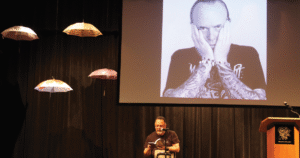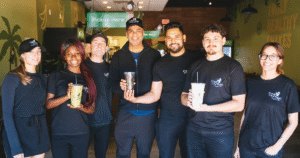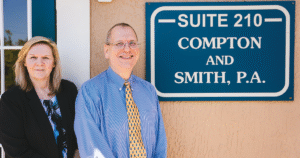
By Lauren Saslow
In San Lorenzo, Italy, in 1907, Dr. Maria Montessori — the first female medical doctor in Italy — opened a small school targeting the developmental needs of children through the implementation of concrete learning experiences. After conducting her own scientific studies on how children learn, Dr. Montessori found that children don’t actually become educated by another person, as much as through their own hands-on experiences and self-motivation.
She also found that children had a tremendous need to move as they learned, which today is called kinesthetic learning (also known as tactile learning). Dr. Montessori also found that for most children, learning takes place by the student carrying out a physical activity, rather than listening to a lecture or watching a demonstration.
She soon began Montessori Teacher Training, drawing upon the experience of teachers from around the globe, and when those teachers returned to their respective countries, they began opening Montessori schools across the world. When Dr. Montessori passed away in 1952, her son Mario worked with other trained teachers to develop the Association Montessori International (AMI), an umbrella training organization for teachers who want to use this “Montessori Method.”

Sonia A. Johnson, who is originally from Colombia, although she earned a B.A. in Education from Northwestern University in Chicago, IL, is a Montessori-certified teacher and the founder and director of five Montessori Schools — four of which are in the Tampa Bay area and one is in Ocala, FL (the Ocala school is for ages 12 months-5 years). The first of her local schools opened in 1970, and although that one no longer is operating, Johnson’s four local campuses now include:
• Montessori Preparatory School (MPS), which opened in Temple Terrace in 1998, and which serves children from age 4 (Pre-Kindergarten, or “Pre-K”) – 5th grade;
• Montessori Academy of Tampa Bay (located on W. Waters Ave. in Tampa) for ages 12 months – 6th grade;
• Montessori Academy of Temple Terrace (MATT), for ages 12 months-4 years old; and
• Montessori Academy of New Tampa (located at 4001 N. Skipper Rd., just off Bruce B. Downs {BBD} Blvd., south of Tampa Palms), also for ages 12 months–4 years.
All of Johnson’s Montessori schools are open year-round on weekdays, with monthly tuition rates starting at just $710 for Pre-K through kindergarten students.
Co-directors Luney Parr and Piedad Alvarez and assistant director Lori Chehav also are Montessori-certified teachers who are responsible for leading 30 faculty and staff members at the MPS location, which doubles as Johnson’s main office. All teachers and staff at these schools must submit to a background check and fingerprinting, as they fall under the regulations of the Florida Dept. of Children & Families. As an added security measure, all rooms in each facility are video-monitored and the front door requires a staff member to “buzz in” the parents and visitors.
Alvarez says that although they are located a few miles southeast of our area, both the MPS and MATT sites in Temple Terrace are popular choices for New Tampa residents, even though the Montessori Academy of New Tampa may be closer to where they live.
“Most of our students live in the New Tampa area,” Alvarez explains, “but their parents may work at Temple Terrace- and University-area businesses and healthcare centers like Moffitt Cancer Center or Florida Hospital Tampa.”
Creating A Professional & Diverse Environment
Johnson’s five Montessori schools are Associate Member schools of the American Montessori Society, the National Center for Montessori Education and the Montessori Institute of America. The MPS site also is an “Internship School,” at which new teachers are able to work with the students under the guidance of Montessori-certified teachers.
While there always is at least one Montessori-certified teacher in each classroom — who is trained in educating students in arts, science, math, music, movement and reading — each school strives to incorporate each teacher’s talents and background into the offerings at each school, in order to expose the children to different languages, cultures and disciplines. Therefore, the extra-curricular activities and languages offered at each site vary.
“We have a diverse range of students from many cultures,” says Chehav. “Parents love it because they get to see students from all over the world.”
On average, there typically are between 150-200 students at each of Johnson’s five Montessori locations, although the main MPS site serves more than 200 students. Johnson says the schools maintain a teacher-student ratio of 1 to 15 for most classes, with smaller teacher-student ratios for the younger students. Some classes even offer co-teachers, and the kindergarten students switch classrooms during the day in order to provide varied teaching environments and educators.
Chehav says that teachers at the local Montessori schools also come from a number of countries, including, “Colombia, India, Bulgaria, China, Ecuador, and Peru.” She adds that most teachers opt to, “stay here more than ten years.”
The hallways of the MPS location are lined with framed black-and-white photographs of Johnson and her young students from when her first school opened in 1970. There also are framed color photos of the increasingly diverse student body sporting their mandatory dress code requirements of red or navy blue polo shirts (bearing the Montessori logo), navy blue or khaki pants, shorts or skirts and sneakers.
The Curriculum
While children may enter a Montessori school as late as the third grade, Johnson and her staff recommend enrollment as early as 12 months of age, the only prerequisite being that the child has to be walking. In contrast, many early childhood programs will not accept children who aren’t already toilet-trained, which can be frustrating for parents trying to offer their child a head start on his or her education.
From an early age, children in these Montessori schools are allowed to work at their own pace in individual and group learning environments that address their unique auditory, visual and kinesthetic learning styles. For example, when preschool children are learning their letters, they say each letter’s sound as they punch them out from paper, and most of the puzzles and manipulatives throughout the highly organized classrooms are color-coded and have different textures.
Because students in the local Montessori schools complete standardized testing annually, they must be as prepared as their public school counterparts — and usually end up being more prepared than their public school counterparts, according to Johnson. For example, the math program incorporates Montessori Math, Sunshine Math (combining critical thinking and problem solving skills), and Saxon Math (combining timing, repetition and drills).
The reading program incorporates a blend of five phonics-based programs (during which the child is introduced to the sounds of the letters of the alphabet) which incorporate Merrill Linguistics, “Hooked on Phonics” and Glen Doman, among others. From as early as age 3 or three-and-a-half, students receive “homework” in the form of “readers” they share with parents or family members at least once a week. When the individual child masters one reader, he or she then moves on to the next level.
Alvarez explains that, “Our students are all blending sounds and learning social skills at age three-and-a-half.” A student entering the first or second grade who is not yet reading begins with the workbooks, she says.
“Everything they (the elementary-aged children) do, whether it is in science or geography or another subject, will have a module that includes manipulatives such as cards, color-coded Bead Bars, puzzles and booklets,” Alvarez explains. In general, students are exposed to concrete concepts first, and then transition to more abstract concepts.
The Language Of Learning
All Montessori students also are exposed to learning a second language and Alvarez says that when foreign languages are learned during early childhood, the child is able to develop native-like accents, which can be much more challenging to acquire in adulthood. Living in Florida, for example, being fluent in both English and Spanish is likely to have long-term benefits for the children and will likely afford them increased career opportunities in the future. Chehav says that all of these skills and more are explored and nurtured through a program centered on each child’s innate curiosity, in order to foster their love of life-long learning.
Other unique learning opportunities offered at the MPS site include other foreign languages (including Mandarin Chinese!), music (piano and guitar), character building, life skills, playtime and a book club. Extra-curricular activities consist of chess club, gymnastics, dance, soccer, student leadership council and gardening. All of the local Montessori schools, however, hold annual Kindergarten graduation, Honors Night (for elementary-aged students), a Family Day program and a Winter Holiday program.
One former New Tampa-location student who is now age 23 says, “The value of a Montessori education is priceless and the benefits will last a lifetime! I began reading when I was 3 years old. By 5 years old, I was already adding, subtracting, multiplying and dividing up to four-digit numbers and had already mastered fractions, decimals, time and money concepts, as well. I feel that my early Montessori experience not only challenged me academically, but also helped me to become an independent thinker and doer, develop leadership skills and become excited about the learning process. These skills helped me in throughout my education and even now in my career as a civil engineer.”
One New Tampa-area parent who wasn’t identified in her on-line comments wrote (on GreatSchools.org), “My daughter was enrolled at Montessori in 2007. While there, she began speaking Spanish, reading, learning geography and science — all before Pre-K! We were so impressed that we moved her to the Montessori school (in Temple Terrace) when it was time for Pre-K. And, as an added boon, the tuition is well below most other (private) schools in town. I can’t recommend (the Montessori program) enough.”
Chehav maintains that many of the children in the local Montessori schools are, “One to two grade levels above students in traditional schools. The earlier the children begin the program, the better. They will have more of an advantage over other students later on (in their education). Every year makes a difference.”
Johnson adds, “Many of our students go to Harvard, Yale and other top universities and graduate schools. After more than 40 years as a Montessori teacher, I can assure you that the program works.”
For more information about any of the local Montessori Preparatory Schools & Academies, call 899-2345 or visit MontessoriAcademies.com or MontessoriAcademies.net. The Montessori Academy of New Tampa is located 4001 N. Skipper Rd. Call the main office number above or 979-4926 for more information about the New Tampa campus.




No comment yet, add your voice below!